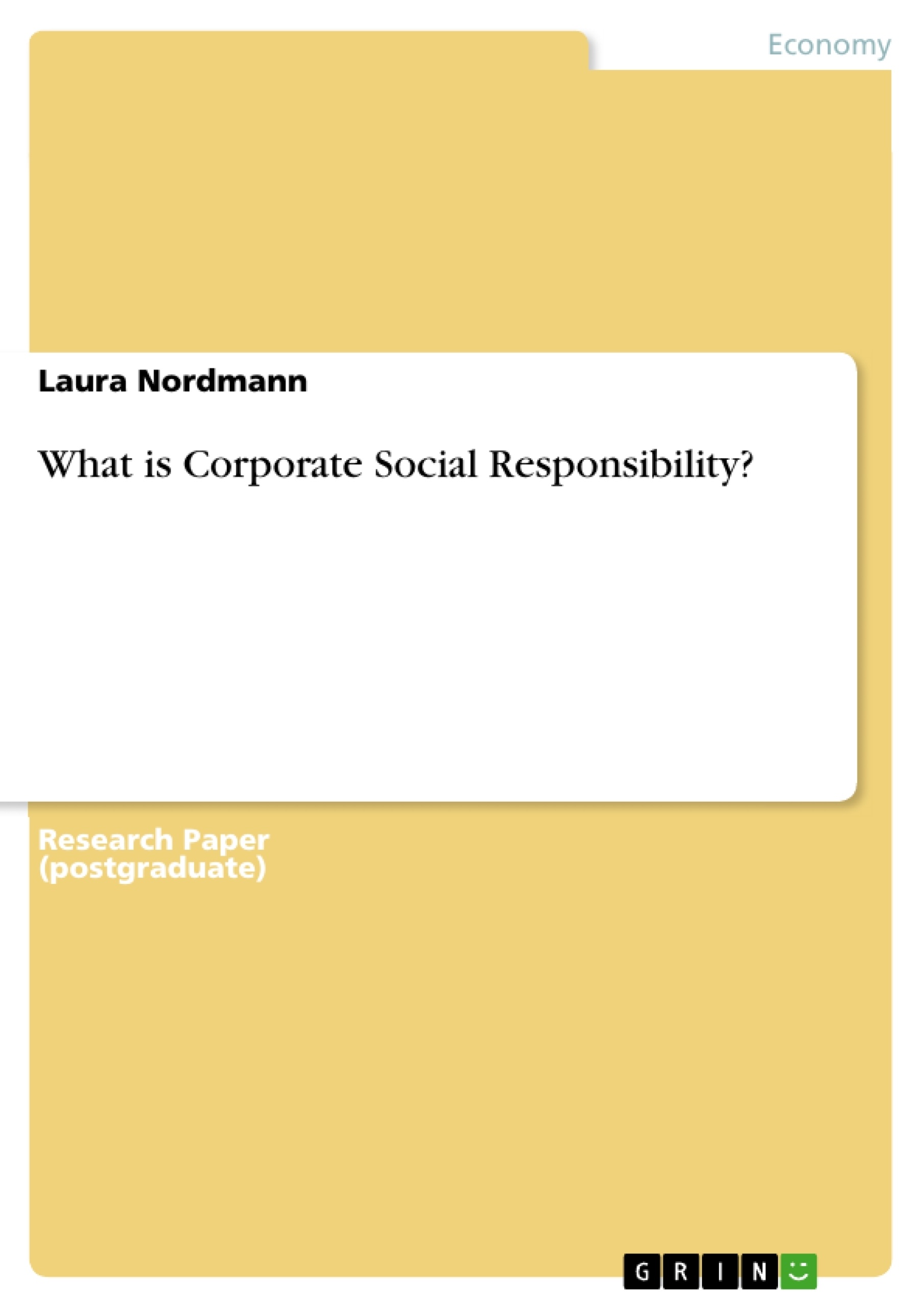This essay will provide a brief overview on the historical background of Corporate Social Responsibility and a perspective on the possible definitions of the term. Subsequently, the most popular models of CSR and the business case will be explained to provide a basis for discussing the limits and potentials of CSR in the process of promoting sustainable development.
Table of Contents
- Corporate Social Responsibility: Historical Background and Definitions
- Early Developments and the Rise of CSR
- Defining Corporate Social Responsibility
- Models of CSR
- Carroll's Pyramid of CSR
- The Two-Dimensions Model of Quazi and O'Brien
- The Three-Dimensions Model of Carroll and Schwartz
- The Business Case for CSR
- Risk Management and Reputation
- Human Resources and Customer Loyalty
- Implementing CSR Strategies
- Business Networks and Integration into Core Business
- The Base of the Pyramid Approach
- Globalisation and Social Standards
Objectives and Key Themes
This essay aims to provide a comprehensive overview of the concept of Corporate Social Responsibility (CSR), exploring its historical origins, key definitions, and prominent models. It delves into the business case for CSR, examining its potential benefits and limitations in the context of promoting sustainable development.- Historical Evolution of Corporate Social Responsibility
- Different Models of CSR
- Business Case for Implementing CSR Practices
- CSR and Sustainable Development
- Challenges and Potential of CSR
Chapter Summaries
The first section traces the development of CSR, beginning with its emergence in the 1950s and highlighting key milestones that shaped its evolution. The essay examines various definitions of CSR, emphasizing the European Commission and WBCSD interpretations. The second section explores prominent models of CSR, focusing on Carroll's pyramid, the two-dimensions model of Quazi and O'Brien, and the three-dimensions model of Carroll and Schwartz. The third section delves into the business case for CSR, highlighting its significance in risk management, reputation building, human resources, and customer loyalty. The final section examines the implementation of CSR strategies, covering the establishment of business networks, integration into core business, the "base of the pyramid" approach, and the challenges posed by globalization and social standards.Keywords
Corporate Social Responsibility (CSR), sustainable development, business ethics, stakeholder engagement, risk management, reputation, human resources, customer loyalty, business models, globalization, social standards.
Excerpt out of 11 pages
- scroll top
- Quote paper
- Laura Nordmann (Author), 2011, What is Corporate Social Responsibility?, Munich, GRIN Verlag, https://www.grin.com/document/206914
Look inside the ebook



